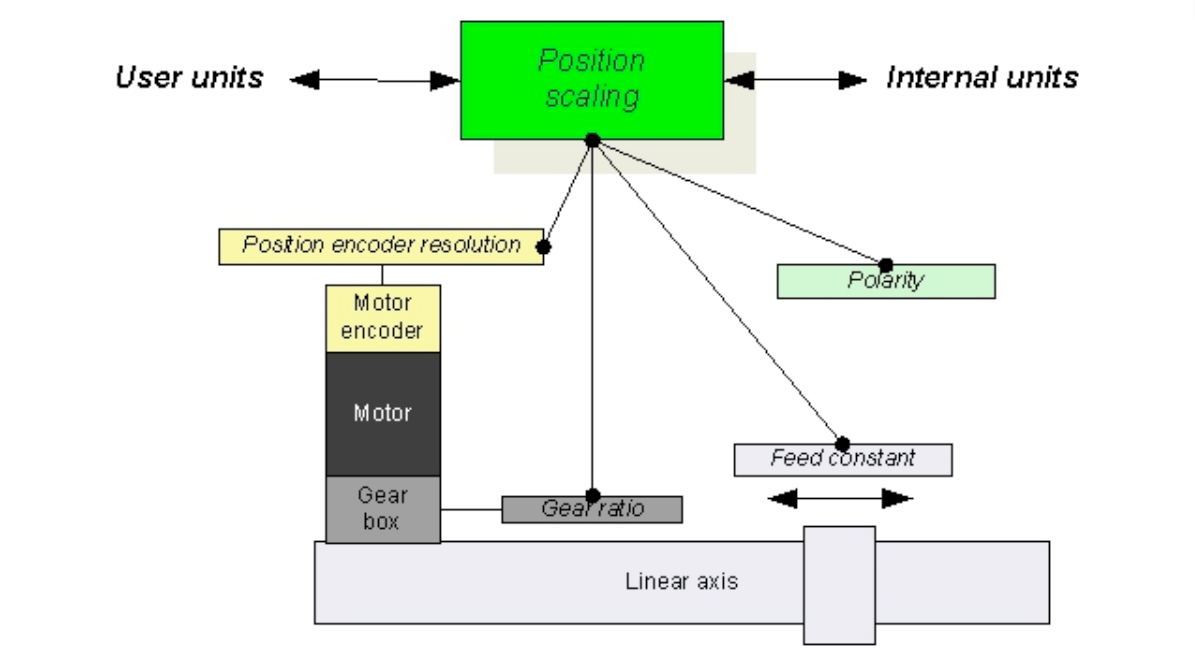Create user-defined units to specify values like resolution and transmission ratio
Used In:
- High-end systems
- Systems that require high speed/acceleration/deceleration with high sensor resolutions
Used In:
Elmo drives enable a User to define scaling units that can specify local values like the sensor resolution and transmission ratio for position, velocity and acceleration. This approach can simplify work, since the User relates directly to the local units whenever making measurements.

Scaling factors use the Gear Ratio together with the Feed Constant to determine the relationship between the position in User’s units and the actual movement in Counts:

The Feed Constant is the positional movement for any motor movement and is calculated using the formula:

The Gear Ratio is the ratio that defines what a gear adds to the movement and is calculated using the formula:

The Position Encoder Resolution is the ratio between the motor shaft and the encoder counts:

Elmo drives use these variables to convert the position from User units into Internal units (Counts) for all position references (e.g., 0x607A) and for position feedback (e.g., 0x6063).
The Velocity Factor can be used to match the velocity units to the User-defined velocity units. The User-defined velocity unit is the User-defined position unit/sec:


The Acceleration Factor can be used to match the acceleration units to the User-defined acceleration units. The User-defined acceleration unit is the User-defined velocity unit/sec:

